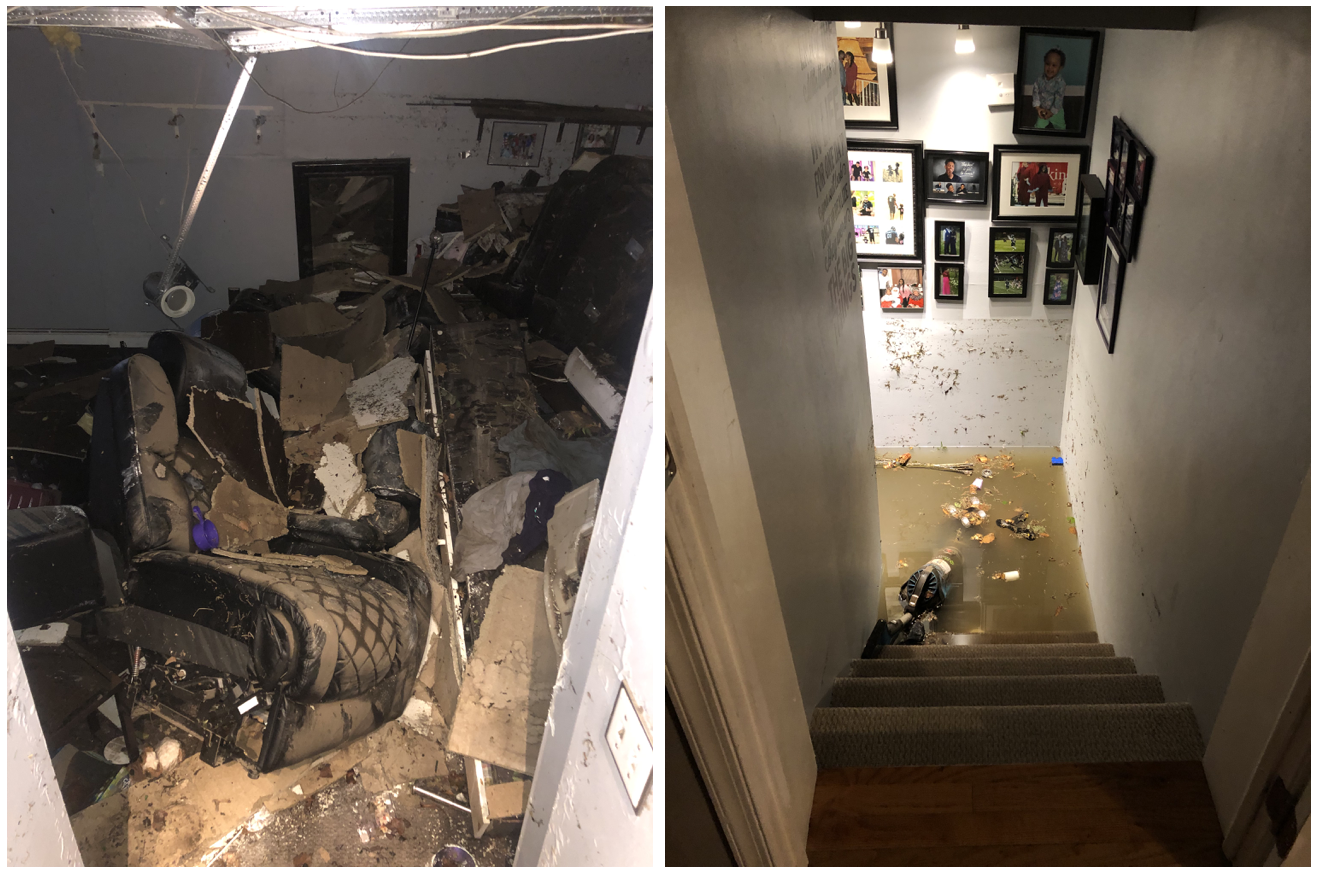Hurricane Ida catches New Haven by surprise
Floods from the hurricane raise questions about increasing risk due to climate change.

Donasia Gray, Contributing Reporter
Days after Hurricane Henri anticlimactically rolled through New Haven, Hurricane Ida delivered the flooding and power outages originally expected from the first storm.
Ida knocked out power across the city, resulting in several feet of flooding in buildings, as water rushed down driveways and into basements, though no injuries were reported. On campus, all 14 of Yale’s residential colleges and Old Campus lost power. Several residences and other campus buildings experienced flooding, pushing dozens of classes online.
Four inches of rain descended on the city between 11:30 p.m. on Sept. 1 and 1:30 a.m. on Sept. 2, according to Rick Fontana, New Haven’s director of emergency operations.
“This was very close to a 100-year storm,” Fontana told the News. “Everyone was impacted by that amount of rain and how fast it came.”
Before Ida’s arrival in Connecticut, the city’s Office of Emergency Management gathered with state and federal emergency agencies to plan a response for Hurricane Henri, even advising some residents to evacuate. After Henri came and went, Ida’s severity in the Northeast came as a surprise, since meteorologists predicted that the storm would primarily impact the Gulf Coast.
With the ground saturated with rain from Henri and other small storms, and a high tide present due to heavy winds, the 5 to 7 inches of downpour that Ida brought, Fontana said, led to a “perfect storm.”
As the flooding took shape, Fontana said the city prioritized setting up barricades to ward cars off of the most dangerous of city streets.
“We always have a huge issue of people wanting to drive through flooded areas, and then they become stuck and have to be rescued,” he said. “They lose their car and impact our emergency response system.”
During the storm, Fontana said some drivers stuck in their vehicles due to rising floodwaters had to resort to escaping through their sunroofs.
By early morning on Sept. 2, the fire department was pumping flood water out of New Haven homes and businesses.
Donasia Gray ’23, a New Haven native, woke up to calls from her vacationing family in the dawn hours of Sept. 2. The alarm at the family home in Newhallville was sounding and her mother wanted her to investigate. When Gray went to check, a dark pool of water, approximately 11 feet high, had creeped up to the third highest step of the house’s basement. It took firemen over a day to pump it out.
“We needed to get everything out of the basement before the mold set in, which I mentioned to friends in Saybrook,” Gray told the News. “The response I got from people was very heartwarming. Honestly, words don’t do it justice.”
Gray said that she and more than 15 others, including Yale classmates, moved items — such as couches, sound equipment, laundry machines, clothes and more — out of the basement.
The damage, she said, reminded her of that inflicted by Hurricane Sandy nine years ago, which also flooded the family house. The repeat occurrence was frustrating. Now, she hopes city officials will help the family find support among the “huge financial hardship” the storm has brought.
Extreme weather events like Hurricane Ida have occurred with increasing regularity and severity in recent years, which environmental experts and government officials have attributed to climate change. New Haven’s Board of Alders declared a climate emergency in 2019.
“Everyone understands that storms are getting more frequent and severe,” said Newhallville Alder Steven Winter. “We really need to look at our resiliency and investments in our infrastructure to try to fortify against the risk of a changing climate.”
The morning after the storm, Winter visited Gray’s family home while the fire department was pumping out water. According to Winter, there was about 5 feet of water still in the basement at that time.
He said parts of the Newhallville neighborhood took on “a lot of rain,” but he didn’t hear from anyone that they lost power. On Wednesday, Winter said that he was planning to go house to house in the Newhallville neighborhood to check in on residents and see how they were affected by the storm. But he called the amount of water in Gray’s family basement “unbelievable.”
New Haven County’s flood risk is only increasing. Flood Factor, a flood risk calculator by nonprofit First Street Foundation, found that flood damages have already amounted to $37.4 million this year for the county, with approximately 32,647 properties at risk. Flood Factor predicts that within the next 30 years, that number will increase to 38,394.
With New Haven City Hall sitting at just 52 feet above sea level, the city has invested in improvements along the New Haven Harbor since Hurricane Sandy struck in 2012. The harbor’s riprap — a layer of assembled rocks used to protect shorelines from erosion — has been repaired. Fontana said that the city also plans to heighten the harbor’s wall near the City Point neighborhood. The wall is located at the point where the West River empties out into the harbor, making it especially vulnerable to flooding during times of storm.
New Haven’s Office of Emergency Management is located at 200 Orange St.







